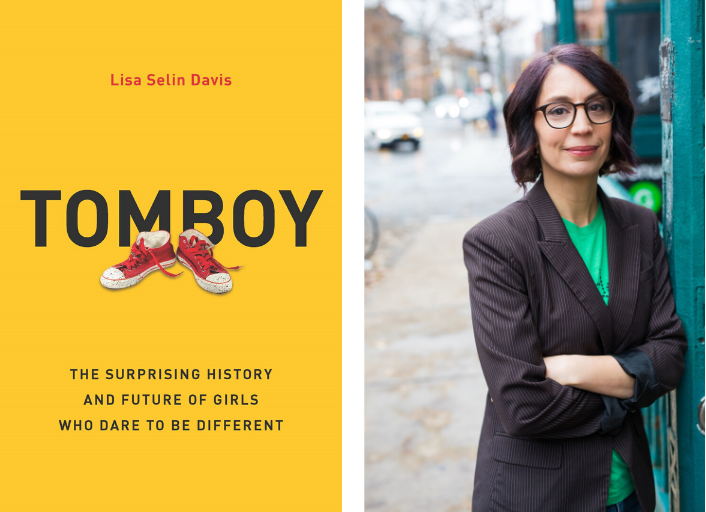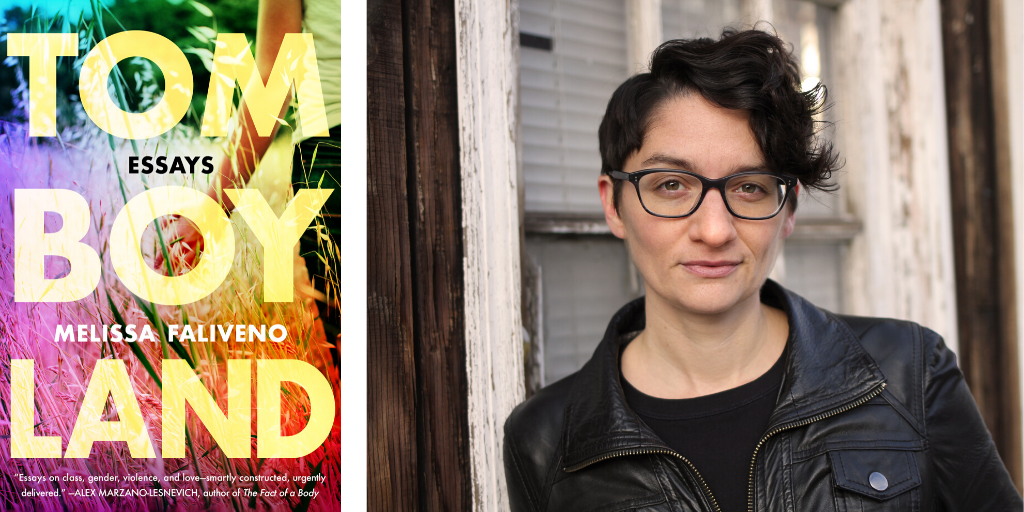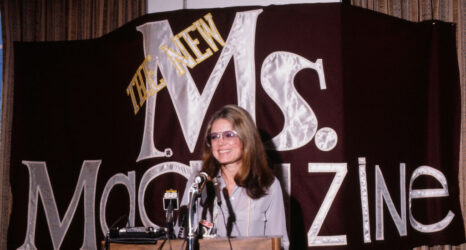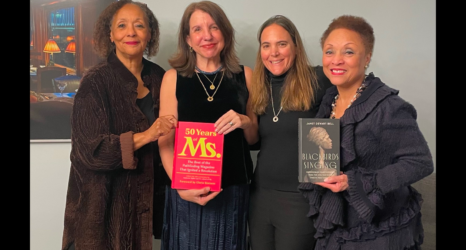The tomboy—the girl who looked and acted “like a boy,” who played with boys or wanted to be one—has long been neglected as a subject of study, even if she was once, not too long ago, revered in popular culture.
Now, two books that interrogate tomboys—one personal, about the experience of being one; the other reported, about the psychology, biology and culture behind tomboyism—are both being published in August.
The authors didn’t know each other, or about each others’ books. They didn’t know if they’d process their shared research the same way, or if they’d come to similar conclusions. So we proposed a shared interview, in which they talk to each other about what they learned, how it changed them, and why they want to talk about gender and tomboys with the world.
Melissa Faliveno, author of “Tomboyland: Essays,” and Lisa Selin Davis, author of “Tomboy: The Surprising History and Future of Girls Who Dare to Be Different,” interviewed one another to talk about tomboys, and writing about this complex subject in a time of cultural upheaval, in which gender is so often a battleground.


Melissa Faliveno: As we both write about in our books, the word “tomboy” has a complicated past. It has some pretty old and insidious racial implications—which I only discovered when I started researching my book—and then of course has long been used pejoratively within patriarchal, misogynistic and heteronormative contexts.
Did the meaning of the word change for you when you were writing this book? What does it mean to claim, or reclaim, this word?
Lisa Selin Davis: Amazingly, I never thought of the word as sexist before this research. I hadn’t interrogated it. It just seemed like a word for a boyish girl, of which there were many when I was a kid.
It was fascinating to learn how it changed from meaning a boisterous boy, when it was coined in the 1500s, to a lascivious woman, to a boisterous girl. And it was fascinating to find the dozens of articles declaring the word dead—starting in 1898!
Over and over, people announced that boys and girls had achieved so much equality that we didn’t need the word anymore, and yet it was still embraced until this century. By the 2000s, a slew of articles by offended moms noted that it implied that being sporty or spunky or strong belonged to boys. They insisted that we just use the word “girl.”
But my experience was different than those moms’. People suggested that my kid wasn’t a girl because of her sportiness and spunkiness and strength—and because of her short hair. Some of those people saw the term “gender nonconforming” as liberating, but to me, it similarly implied that a girl couldn’t embody those qualities or looks, that if she did, she still needed a different word or identity.
Historically, few kids claimed the word tomboy; it was a word adults used to explain gender-defiant girls, and then a word those adults proudly claimed later. I think if you like it, and understand the word’s sexist history, it’s fine to claim it. I definitely believe that anyone should claim the word that feels right.
LD: You write that you grew up with women who were “tough in a way that feels specific to midwestern women: a little closed off, a little hard.” I talked to a butch woman in Toronto who noted that, in the city, there was a look—short-haired, athletic/outdoors clothes—and a kind of confidence/swagger that was associated with sexuality, but once she went out to the country there were tons of straight women who looked and acted that way. What do you think about the relationship between geography and gender?
MF: I thought about that a lot as I was writing Tomboyland. I actually kept circling around this idea of “the geography of identity,” and the ways in which the places we come from, the class and family structures we live in, and the kind of work we do in those places and within those structures, greatly influence how we live in our bodies and express gender.
In my essay “Tomboy,” I write about the kind of labor that working-class Midwestern women do: those like my Wisconsin family, who worked (and in some cases still work) in all manner of jobs that are very physical—farming, factory lines, retail-store floors, gas stations, nursing homes and hospitals—and as such require comfort and range of motion.
Women who work these kinds of jobs, be they straight or queer, often look a little more butch out of necessity; they have short hair that they don’t have to worry about; they don’t wear makeup or jewelry, they wear comfortable clothes and sensible shoes—regardless of their gender identity or sexual orientation. They’re also strong. Or, as we liked to call it in my family, “big-boned.”
So it’s part expression, part circumstance, part DNA—bodies built by the generations of farming and factory-working women that came before them.
There are obviously women who work hard-labor jobs all over the country, but when I was considering this question I was thinking of it specifically through the lens of my own family, and working-class Midwesterners like them. I look and present the way I do now, here in New York City, mostly because it’s in line with my gender identity; I feel more at home in my body this way. But I think there’s also part of it—some biological, some learned—that’s been inherited from those generations of Midwestern women who came before me.
MF: One of my favorite parts of your book are the vignettes you include—micro-essays by tomboys past and present. Can you tell me a little bit about the impetus to include these, who you reached out to and what questions you asked them to consider, and what you learned from their stories?
LD: When I started researching the book, I had very little idea of its shape. I wasn’t a tomboy, and I wasn’t even friends with many growing up. I knew nothing.
So I started by just interviewing people, asking them to share their stories with me, asking open-ended questions with very little agenda. I asked what their memories of the word were, and when they knew it applied to them, and how their experience was. Most of the stories overlapped a lot, especially for people who were kids in the 1970s; the kids from the 1950s sometimes had a harder time, more pressure to conform. But no matter how similar the childhood tales were, they were very, very different in their adult outcomes. Tomboys grew up to be all kinds of different people—but most of them grew up to be self-confident.
MF: We both used some of the same research in our books, including Michelle Ann Abate’s book “Tomboys: A Literary and Cultural History.”
One of the things I learned from that book is about this idea of “tomboy-taming,” wherein a tomboyish girl is expected to tame herself out of tomboyism as she gets older. It opened up this realization in me that I had done this in adolescence, though I didn’t realize at the time that I was doing it, or that my motivations were pretty directly related to the patriarchal systems in which I was raised, not least in a small Midwestern town.
You have a section in your book about this—was it a new concept to you, too, and did it inform or change the way you see the trajectory of the tomboy?
LD: It was definitely new to me, and it’s really key to how adults have understood—or not—childhood gender expression. Even if they thought a masculine little girl was adorable, they expected that kid to desist at puberty.
As historian Renée Sentilles wrote in her book “American Tomboys, 1850–1915“: “The age of the tomboy is what makes her adorable if she is under twelve, interesting in early adolescence, problematic in late adolescence, and downright dangerous in adulthood.”
Tomboyism was adorable for a kid and a threat for a woman—which is why even some people I interviewed who weren’t trans had traumatic puberties. They had lived their childhoods looking like, playing with, acting like boys, and then their bodies betrayed them. They became subject to the male gaze.
Some responded by giving in, and some didn’t mind. Others tried it out for a while (this may be you!) and then realized, no, I don’t have to do this. I don’t have to conform.
My hope is that we can create enough room and understanding so that no children feel that pressure to cast off masculinity just because their bodies, and society’s expectations, change.
LD: You also talk about how many people assume you’re a lesbian, because of the way you express your gender. What is the connection, in your mind? Do you think there’s a “bisexual look?”
MF: I wouldn’t say there’s a “bisexual look”—like all queer people, there are femme bisexuals, butch bisexuals, nonbinary bisexuals and everything in-between.
For me, what’s been interesting to interrogate is the way that my body, which is coded as queer, gets interpreted. Most people read me as queer, which is how I want to be read; but they often assume that queer equals lesbian. They see this butch-ish woman and assume she could only be gay. So when I say I’m bi, or introduce my partner, a cis-man, it’s shocking, and disrupts that assumption.
It’s interesting too when you juxtapose that assumption with the way that femme-presenting bisexual women often get read as straight. So when they reveal themselves to be bisexual, it also disrupts an understanding or interpretation. It’s all part of this binary thinking that’s been drilled into us since birth (and still exists, even in those of us who work very hard to think outside that binary), that we must all be one thing or the other. Otherwise we’re pretending, or confused, or closeted.
MF: My essay “Tomboy” is really a kind of investigation into my own gender identity, and the ways in which my gender identity intersects with my sexuality—a question to which I still don’t have a certain answer. Did writing this book change your understanding about gender identity, expression, or fluidity in any way?
LD: I learned so much about the pathologizing of gender nonconformity, of the ways that gender identity disorder was grounded both in homophobia and in outdated gender norms.
One of the biggest things I learned is that different people have different definitions of the words sex, gender, gender identity—and they’re still shifting. A lot of the cultural wars around gender have to do with these competing definitions.
To me: sex = male/female/intersex; gender = masculine/feminine (that is, cultural ideas about how males and females should be); gender identity = man/woman/non-binary, etc. If gender is the social meaning of sex, then it is, by its nature, fluid. Many of us change our gender expression, our masculinity and femininity, as we age and grow.
Going through perimenopause, for me, is akin to a second puberty, with massive changes in my body and brain that have affected everything, even the way I dress—Once I passed 45 and my hormones started changing, I looked at my wardrobe and thought, why do I have all these giant toddler dresses? It’s time for the blazer-and-t-shirt look.
Your generation was the first to grow up in the full hyper-gendering of childhood, to be told that every single color, toy, item of clothing, and personality trait was pink or blue. I think that has had profound psychological impacts, but I also think that identifying as gender-fluid is a portal to rebelling against it, to saying, “These rules don’t apply to me. I don’t abide the divide.” And I’m for fighting those constricting stereotypes however we can.
LD: What are your definitions of sex, gender, gender identity? Are they different from mine?
MF: You know, I honestly don’t think I’ve ever sat down and specifically tried to define these terms. I’m not a gender theorist by any stretch, and I’m a total late-bloomer in every way, so I’m really still working it out. And that, in large part, what my essay “Tomboy” is all about—trying to make sense of both my body and language, and figuring out how I and my body fit (or don’t) into the boundaries and definitions of gender and sexuality. But I think we’re pretty much on the same page, although I don’t think I separate gender and gender identity; rather, I think of the breakdown as sex, gender identity, and gender expression. But there’s a murkiness in gender identity and expression, in that it’s all fluid, that expression and identity can both change. I think this used to feel confusing to me, and maybe it still is (like I said, I’m a late-bloomer, and I didn’t grow up with the kind of education or resources that necessitates these kinds of conversations, so I’m still very much learning). But I also think it’s super liberating.





